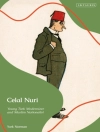Though British Rail had dispensed with steam locomotives by 1968, the greatest changes to the capital’s railways occurred afterwards. In the early years of the 1970s much of the network was run down and some parts not expected to survive. Non-corridor passenger stock, all painted in drab blue, dominated suburban services. Inter-city routes had loco-hauled stock in blue and grey. Many lines were still controlled by semaphore signals. Much needed investment came in the form of electrification, with, for example, the Great Northern route. The famous Inter City 125 became the standard train for the longer distance services. Over the last fifty years London has seen great changes in its railway network. Some lines have closed, like Broad Street, but when this has occurred it is usually to facilitate improvements nearby. New rolling stock has transformed passenger services – who would have thought that five-car trains would be running on a rejuvenated North London Line, once the haunt of the old class 501 units?John Law has been living in the South East since 1970, with much of his time spent working on the railway. He took an enormous amount of photographs over those years, sometimes in places inaccessible to the public. In this book he takes us to the major terminals, the far-flung branches and the many depots. He shows us vanished scenes and the latest developments, including those on the London Underground and the Dockland Light Railway.
John Law
London’s Railways Since the 1970s [EPUB ebook]
London’s Railways Since the 1970s [EPUB ebook]
Achetez cet ebook et obtenez-en 1 de plus GRATUITEMENT !
Langue Anglais ● Format EPUB ● ISBN 9781445695747 ● Maison d’édition Amberley Publishing ● Publié 2021 ● Téléchargeable 3 fois ● Devise EUR ● ID 8016990 ● Protection contre la copie Adobe DRM
Nécessite un lecteur de livre électronique compatible DRM












